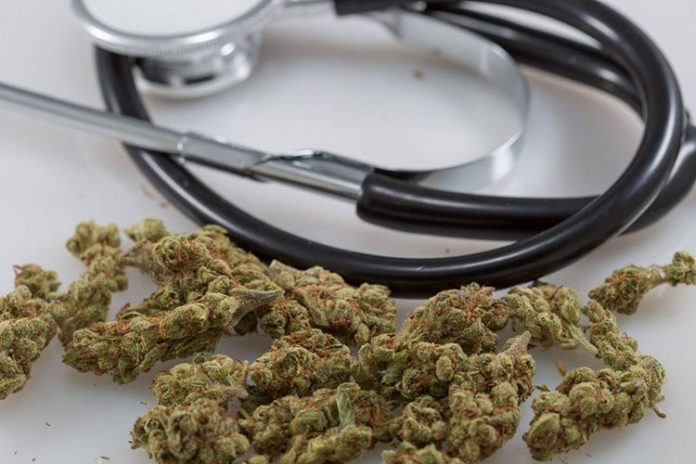Letting people legally access marijuana appears to reduce reliance on addictive opioids, two new studies published by the American Medical Association find.
“Medical cannabis laws are associated with significant reductions in opioid prescribing in the Medicare Part D population,” concludes one paper from researchers at the University of Georgia, Athens. “This finding was particularly strong in states that permit dispensaries, and for reductions in hydrocodone and morphine prescriptions.”
The second study, from scientists at the University of Kentucky and Emory University, noted that “marijuana is one of the potential nonopioid alternatives that can relieve pain at a relatively lower risk of addiction and virtually no risk of overdose.” It found that laws allowing medical cannabis or recreational marijuana “have the potential to lower opioid prescribing for Medicaid enrollees, a high-risk population for chronic pain, opioid use disorder, and opioid overdose.”
“Marijuana liberalization may serve as a component of a comprehensive package to tackle the opioid epidemic,” the researchers conclude.
The two papers, released Monday by JAMA Internal Medicine, a publication of the AMA, looked at use of opioids such as fentanyl by people enrolled in Medicare and Medicaid, with both examinations finding that states with legal marijuana access saw lower reliance on the pharmaceutical drugs.
And the easier the access to legal marijuana, the lower the rate of opioid prescribing.
“States with active dispensaries saw 3.742 million fewer daily doses filled; states with home cultivation only [laws] saw 1.792 million fewer filled daily doses,” one of the studies, which focused on medical cannabis laws, found.
The other new paper shows that while medical marijuana is associated with reduced opioid prescriptions, recreational laws have an even greater effect.
“State implementation of medical marijuana laws was associated with a 5.88% lower rate of opioid prescribing,” the authors wrote. “Moreover, the implementation of adult-use marijuana laws, which all occurred in states with existing medical marijuana laws, was associated with a 6.38% lower rate of opioid prescribing.”
U.S. Sen. Kirsten Gillibrand (D-NY) recently suggested that pharmaceutical companies oppose marijuana legalization for selfish reasons.
“To them it’s competition for chronic pain, and that’s outrageous because we don’t have the crisis in people who take marijuana for chronic pain having overdose issues,” she said. “It’s not the same thing. It’s not as highly addictive as opioids are.”
The results of the new studies add to a growing body of research indicating that legal marijuana access is associated with reduced opioid issues.
In 2014, for example, a previous JAMA study showed that states with medical cannabis laws have roughly 25 percent lower opioid overdose rates.
A separate analysis published in February concluded that “legally protected and operating medical marijuana dispensaries reduce opioid-related harms,” suggesting that “some individuals may be substituting towards marijuana, reducing the quantity of opioids they consume or forgoing initiation of opiates altogether.”
And previous work by Ashley and David Bradford of the University of Georgia, who authored one of the new studies released on Monday, showed broad reductions in Medicare and Medicaid pain prescriptions when state medical cannabis laws went into effect. Their new paper builds on that by zeroing in on opioid painkillers and showing that the type of state marijuana law has an effect on the reduction in prescriptions.
“The type of [medical cannabis law] matters,” David Bradford said in an email. “Dispensaries have the biggest effect.”
The other paper, by the Kentucky and Emory researchers, tabulated reductions in opioid prescriptions associated with changes in laws, finding that medical cannabis policies lead to 39.41 fewer opioid prescriptions per 1,000 enrollees annually and that the effect for recreational legalization was even larger.
“Furthermore, the implementation of adult-use marijuana laws was associated with a 9.78% lower Medicaid spending on prescription opioids, equivalent to an annual saving of $1,815 Medicaid spending per 1,000 enrollees,” the study found. “The implementation of medical and adult-use marijuana laws was also associated with a lower rate of Medicaid-covered prescriptions for nonopioid pain medications of 8.36% and 8.69%, respectively.”
The research teams behind both new studies said that medical cannabis shows promise as a partial solution to opioid issues.
“Combined with previously published studies suggesting cannabis laws are associated with lower opioid mortality, these findings further strengthen arguments in favor of considering medical applications of cannabis as one tool in the policy arsenal that can be used to diminish the harm of prescription opioids,” the Bradfords’ Georgia team wrote. “Furthermore, a growing consensus suggests that cannabis can be used to effectively manage pain in some patients. If initial licit prescriptions for opioids can be reduced, then there is a plausible theoretical pathway to anticipate that opioid misuse and abuse could also fall.”
When legal marijuana is available, some patients appear to be more likely to choose it instead of prescription pain pills that can lead to addiction or overdose.
“Most opioid use disorder and overdose cases occurred in patients with legitimate prescriptions from health care professionals for pain management. Marijuana liberalization, therefore, may have benefited these patients by providing them with legal protection and access to marijuana as an alternative relief from their pain conditions,” the Kentucky and Emory team wrote. “The widespread public support will bring medical marijuana laws to more and more states for years to come, which may help decrease the use of prescription opioids in pain management and the adverse consequences, such as opioid use disorder and overdose.”
Those researchers also noted that “marijuana may help ease opioid withdrawal symptoms.”
“Thus, marijuana liberalization potentially reduced prescription opioid use on 2 fronts, serving as a substitute for opioid pain medications, and as a complement to opioid use disorder treatment,” the wrote. “The potential of adult-use marijuana laws to reduce the use and consequences of addictive opioids deserves consideration, especially in states that have been hit hard by the opioid epidemic.














